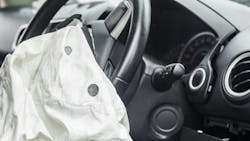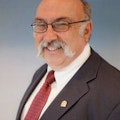YesterWreck – The Column #11: The Collision Repair Industry 1990 – 1999
Editor's Note: This is the 10th in a FenderBender-exclusive series, excerpted from Ledoux’s book, YesterWreck: The History of the Collision Repair Industry in America, available here. Find the rest of the excerpted series here.
Overview
The decade of the 1990s will be remembered for the emergence of the internet and the cell phone and how both have so interconnected everyone – including collision repair shops, the insurance industry, collision industry suppliers, and the public. The first publicly popular internet browser was called Mosaic. Then in 1998, a company with what people thought at the time was a funny name, Google, launched a search engine which has become the industry standard. Information -– on practically anything –- was only a click away. No longer was it sufficient for a body shop to be in the local phone book's Yellow Pages. It was now necessary to have your own web page. Companies popped up all over offering an “internet solution” to whatever business question you had. It wouldn’t be long before the entire collision industry, including shops, suppliers, and insurance companies, were connected. A company called Collision Service Inc. offered to place body shops on their Autobody Web and make body shops “visible to consumers” via America Online, CompuServe, and Prodigy.
NACE is Growing
In January 1990, the final attendance numbers for the 1989 NACE show, held November 30 – December 3, revealed that 15,384 people attended the show, up from the 12,800 who attended in 1988. The show had over 1,420 booths and 400 exhibitors. All seminars were reported full or sold out. The NACE show would grow in size and importance throughout the 90s. Shop managers were hungry for information on how to better repair vehicles and manage their shop. And while at the show, shop owners were still in an equipment-buying mood. According to a short trade magazine article, the equipment purchasing explosion was still on and would continue for the foreseeable future.
A Continued Dearth of Technicians
A trade magazine article from the early 1990s noted that entry-level technicians were getting harder and harder to find. Most people right out of high school don’t want to spend a year or two in school to learn the trade, then go to work in a shop where working conditions aren’t the best – but the article also notes that working conditions are improving. It notes that the average body technician, in 1986 (the latest figures available from government statistics) would make about $30,000 per year, better than the average worker in 1986 and certainly better than any unskilled job. But it’s not as much as the job should command given the amount of training and knowledge a top technician must have.
Work On Your Business, Not in It
And as collision repair grew more complicated, it was clearly apparent, painfully so to some shop owners, that they could no longer work alongside their friends and contemporaries out in the shop, straightening metal and spraying paint. It was what they were comfortable with because that was where they started, many of them, in the late ‘60s and early ‘70s. In the 1990s, it was crucial to manage their business, which included becoming a “purchasing agent” of sorts. Whether it is parts, paint or equipment, purchasing the correct item, at the right price, and at the right time could make the difference between a successful shop, and one that died a slow death.
Multiple Shop Operators
One of the issues facing the industry in 1990 was the body shop franchise concept and if it would catch on. This became known as the multiple shop operation, or MSO. Most shops at the time were single-point operations with a few brave entrepreneurs with a second shop. But the industry started to hear more and more about shop “chains” where one entity represented 20 or more shops. Change was in the wind.
Shop Licensing
The issue of shop licensing, discussed for years, was again a hot topic at the end of 1991. With growing environmental regulations and the cost of compliance, legitimate shops were being undercut in price by those peripheral shops that operated “under the radar” and continued to operate without compliance as long as they could. Legitimate shops were angry. The question of shop licensing again arose in the summer of 1997, and a number of shop owners weighed in. Some felt licensing would have no effect. Others felt it would weed out those shops that are ill-equipped to properly repair a car. Some felt that if shops are licensed by the government, it will only mean more government intrusion into their business, more bureaucracy, and higher costs.
Safer Cars
Cars got safer in the 1990s. At the end of 1993, the Insurance Institute for Highway Safety (IIHS) said that 91 percent of all 1994 model-year passenger cars were equipped with airbags, at least on the driver’s side. Sixty-three percent had airbags for both driver and right-front passenger. Some pickup trucks and utility trucks also had airbags. To some in the industry, airbags would be not a blessing but a curse. Repairers claimed that their high replacement costs were causing some cars that would ordinarily be repairable to total out. This spawned a black market in stolen airbags. It was not uncommon for thieves to hit a new car dealer’s lot at night, break into every car, and steal every driver’s side airbag. The bags were available the following morning to unscrupulous shops paying prices that were 50 to 70 percent off the MSRP price.
Contractors vs. Employees
By the early ‘90s, some shops had their past come back to haunt them. For years, shop owners had been paying some technicians as “contractors” to avoid paying withholding taxes to Uncle Sam and avoid workman’s comp insurance. With the recent economic downturn, more and more collision technicians were laid off and as such, tried to collect unemployment benefits, now claiming that they were actual employees of these shops.
Get Involved
Another thing that started to gain more traction within the industry was the call to get more involved in legislation, especially at the state and local level. Industry columnist Gary Dimas wrote “It’s the responsibility of all Americans, including collision shop owners, to stay informed about issues that affect them. I know it’s frustrating to see things happen to you, in situations where you feel you have little or no control. The worst case though, would be to have an opportunity to help yourself and your industry pass you by simply because you were not aware or involved.”
OEMs More Visible
The OEMs were starting to make their presence more obvious within the industry. A trade magazine article by Darrell Malott and John Munoz called Manufacturers Are Part of the Loop explains that OE manufacturer representatives are becoming more visible in the collision industry, manning vendor booths at industry shows and attending industry events. Malott and Munoz encouraged shop owners to seek them out and start a dialog with them so they would understand a shop's needs and issues.
Consumer Rights
Late in 1994, Ford Motor Co. released the results of a survey it conducted that noted 95 percent of respondents believe they have the right to know in advance whether imitation crash parts would be used to repair collision damage on their vehicle. In addition, 84 percent favored laws requiring advance disclosure if imitation parts were to be used. And 78 percent supported legislation that would require written consent before imitation parts could be installed on their vehicle. If the collision industry was growing up and maturing, so were consumers.
Excerpted from Ledoux’s book, YesterWreck: The History of the Collision Repair Industry in America, available here.
About the Author
Gary Ledoux
A native of New Hampshire, Gary Ledoux retired in 2017 after a 48-year career in the automotive industry. For 18 years, he worked in various capacities in numerous car dealerships in New Hampshire. In 1988, Gary began his career with American Honda, eventually serving as the assistant national manager for American Honda’s Collision Parts Marketing Department, and was instrumental in launching Honda’s certified body shop program. He was very active in the collision repair industry, serving on various Collision Industry Conference (CIC) committees and as a three-time chairman of the OEM Collision Repair Roundtable. Today, Ledoux is a freelance writer splitting his time between his Florida home and vacation property in South Carolina. In the summer of 2018, he published his fifth book, YesterWreck: The History of the Collision Repair Industry in America.

